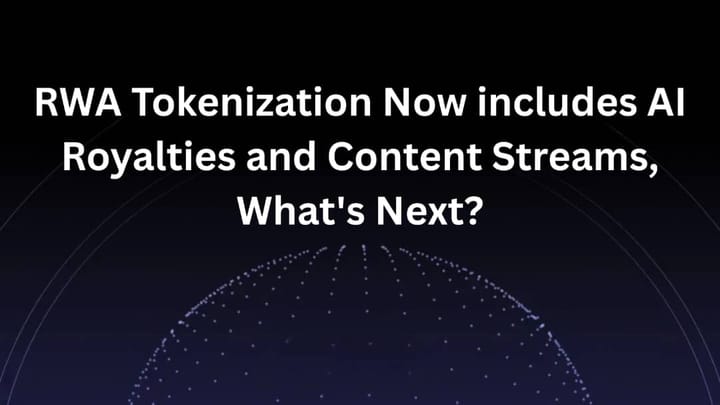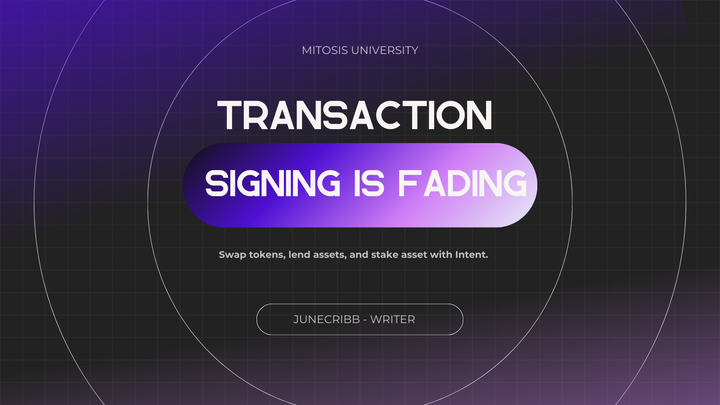From Manifesto to Reality: Mitosis and the Dawn of Programmable Liquidity
Introduction
Decentralized Finance (DeFi) promised a world of open and fair financial markets. Yet, as The Liquidity Manifesto warns, a hidden crisis of fragmented and exclusive liquidity deals is undermining that promise
Privileged insiders (often called “whales”) strike secret agreements for better yields, creating an uneven playing field while regular users are left with scraps. This information asymmetry—where only a few know the true state of liquidity—cracks the foundation of DeFi’s ideals. The manifesto calls for change: a transformation of liquidity into a programmable and transparent primitive that operates in the open, for the benefit of all.
Mitosis emerges in direct response to this call. It is a protocol and Layer-1 blockchain designed to break the chains of hidden liquidity and make on-chain finance genuinely transparent. In the spirit of the manifesto’s philosophical tone, Mitosis embodies the conviction that what was once done in the shadows can be brought into the light of the blockchain. This article explores how Mitosis turns the manifesto’s vision into reality, making liquidity programmable, shareable, and fair for newcomers and veterans alike.
DeFi’s Hidden Liquidity Crisis
Liquidity is the lifeblood of DeFi, enabling trades, loans, and yields. But today, that lifeblood is often locked behind closed doors. Many DeFi protocols quietly rely on closed-door deals: large liquidity providers get preferential treatment (higher rewards, lower risks), while the public sees only a partial view of the market. Blockchain ledgers might be transparent, but they only reveal what the power players allow us to see. The Liquidity Manifesto describes this as a “shadow system” of private arrangements beneath the surface of decentralized finance
The result is a mirror of traditional finance’s flaws: fragmented liquidity pools that don’t communicate, unequal access to opportunities, and markets that aren’t truly free.
Newcomers to DeFi often find it confusing that despite decentralization, power imbalances persist. They may not realize that a yield farm’s attractive interest or a token’s stable price could be propped up by undisclosed agreements. This opacity leads to mispricing and instability. For example, a protocol might boast high total value locked (TVL), but that TVL can vanish overnight if a whale’s special deal ends—leaving regular users holding the bag. Such “mercenary capital” makes DeFi volatile and unpredictable.
Mitosis recognizes that DeFi shouldn’t have to mimic Wall Street’s secrecy. Just as Bitcoin brought transparency to money and Ethereum to smart contracts, the time has come for liquidity to undergo a similar revolution. What if liquidity provisioning was not a privilege of the few, but a common good governed by the many? This question is at the heart of Mitosis’s mission. The manifesto’s rallying cry — “Arise, liquidity providers of the world. You have nothing to lose but your information asymmetry... The revolution will be on-chain.”
Liquidity as a Programmable Primitive
To fix the system, we must rethink what liquidity can be. Turning liquidity into a programmable primitive means treating liquidity similar to how we treat code or money on the blockchain: as something malleable, transparent, and governed by rules rather than by behind-the-scenes negotiation. In practical terms, this vision has several key pillars:
- Transparency: All liquidity arrangements should be executed via smart contracts in public. Deals that were once private become visible and auditable by anyone. This openness eliminates the informational edge that big players had and levels the playing field for newcomers and small liquidity providers. As the manifesto proclaims, “What was once negotiated in private will be executed in public... known only to the few will become visible to all.”
- Programmability: Instead of static liquidity stuck in one pool or platform, programmable liquidity enables automated management of funds. Liquidity can move where it’s needed most, allocated by code and community governance rather than manual deals. This concept transforms liquidity into an active resource — one that can be sliced, combined, lent, or utilized across many DeFi applications simultaneously. It’s liquidity that can adapt to market conditions in real time.
- Collective Ownership: A programmable liquidity system implies that the community of users has a say in how liquidity is used. This introduces the idea of Ecosystem-Owned Liquidity (EOL) – liquidity that is pooled and governed by the ecosystem itself. In Mitosis’s model, anyone can contribute liquidity to a common vault and gain governance tokens that vote on where that liquidity goes. This is a stark contrast to the old way, where only a few insiders decided where capital flows. (For more on how Mitosis implements EOL, see the explainer on What is EOL?.)
- Interoperability: DeFi spans multiple blockchains, and liquidity often gets fragmented as a result. A truly programmable liquidity primitive must be omnichain – able to flow across different networks. Mitosis approaches this by using cross-chain vaults and tokenized representations of assets that work on its Layer-1 and beyond. By standardizing liquidity in this way, Mitosis makes it possible for value to move wherever opportunities are, without getting stuck due to technical barriers.
In essence, making liquidity a programmable primitive elevates it to the same level as tokens or contracts in DeFi. It becomes composable – developers and users can plug liquidity into various modules (lending, trading, yield farming) without friction. This unlocks innovation: new financial products can be built on top of a reliable base of transparent liquidity. The entire ecosystem benefits from higher efficiency (no more idle assets) and sustainable yields (no more short-term mercenary farming only).
Philosophically, this shift means trust moves from people to protocols. We no longer have to trust that a deal was fair or that a big LP won’t suddenly withdraw – the rules are encoded and visible. Liquidity becomes a public utility in DeFi, not a commodity hoarded for bargaining power.
Mitosis: Bringing the Liquidity Revolution to Life
How does Mitosis implement these ideas in practice? As a Mitosis Core protocol, it introduces a suite of tools and mechanisms that turn theory into reality:
- Mitosis Vaults and Vanilla Assets: Mitosis deploys smart vaults on multiple chains. When you deposit an asset (like ETH or USDC) into a vault, you receive a Vanilla Asset – a one-to-one token representation of your deposit on the Mitosis network. For example, depositing ETH mints an equivalent amount of vETH (Vanilla ETH). These vanilla assets are the foundation of Mitosis’s liquidity system. They are simple mirrored tokens, but unlike traditional wrapped tokens, they are integrated into Mitosis’s liquidity logic from the start (hence “vanilla”). Vanilla Assets allow Mitosis to keep track of contributed liquidity transparently, and they can be upgraded to more powerful forms. (Learn more in the Vanilla Assets documentation.)
- miAssets and EOL Governance: When you contribute liquidity, you can choose to stake your Vanilla Assets into the Ecosystem-Owned Liquidity pool. In return, you receive miAssets (Mitosis Assets) which are yield-bearing tokens representing your stake in the collective pool. But miAssets are more than just receipts – they come with governance power. Holding a miAsset (like miETH) lets you vote in the Mitosis DAO on how to allocate the shared liquidity. Through this DAO governance process, the community decides which protocols or opportunities the pooled liquidity will support. This means even a small liquidity provider gains a voice in decisions that were once the domain of whales. Mitosis’s governance model thus ensures fairness: capital is deployed where the collective deems most beneficial, with transparent criteria and on-chain voting.
- Matrix and maAssets: Mitosis also offers Matrix vaults, a framework for curated DeFi opportunities. If EOL (miAssets) is like a general-purpose liquidity pool governed by all, Matrix is a set of specialized campaigns or strategies. When users allocate Vanilla Assets to a Matrix campaign, they receive maAssets (Matrix Assets) which correspond to that campaign’s yield strategy. For example, a Matrix campaign might partner with a specific DeFi protocol to provide liquidity for a fixed time in exchange for rewards; depositing into that campaign yields a maAsset token plus the promised rewards. Matrix ensures even exclusive deals are run transparently: instead of off-chain negotiations, everything is codified and users opt-in by minting maAssets. Both miAssets and maAssets are tokenized liquidity positions – meaning they are tradeable and composable. You’re not stuck in one vault; you can move or utilize these tokens elsewhere in DeFi (sell, lend, use as collateral) while still earning from the underlying liquidity. This flexibility fulfils the promise of “liquid LP positions” where providing liquidity no longer means sacrificing opportunity cost
- Cross-Chain Integration: Mitosis is built as an Ethereum-secured Layer-1, with cross-chain capabilities baked in. Liquidity provided on one chain can be represented and used on another through the Mitosis network. Instead of having separate, siloed liquidity on Ethereum, Polygon, Solana, etc., Mitosis acts as a unifying layer where that liquidity coalesces. A deposit on one chain mints a Vanilla Asset on Mitosis, which can then be deployed to any connected chain’s opportunities without manual bridging. This drastically reduces liquidity fragmentation, one of the key issues in DeFi today. In effect, Mitosis creates a single, interoperable liquidity market spanning multiple blockchains.
- On-Chain Yield Distribution: Because all Mitosis liquidity flows are on-chain, rewards distribution is transparent. Whether it’s fees earned by the pooled liquidity or incentives from partner protocols, everything is handled by smart contracts. Providers earn their fair share of yields proportional to their contribution and governed decisions, with no special cuts for insiders. The entire process from depositing assets to earning yields and voting is done through a clear on-chain workflow. New users can participate by simply depositing and receiving the relevant Mitosis tokens (vAssets, miAssets, etc.), with the assurance that they see the same opportunities as everyone else.
Through these mechanisms, Mitosis fulfills the manifesto’s vision: every liquidity arrangement becomes a verifiable on-chain event, and every participant has equal access to the system’s benefits. Information that was once siloed is now shared. Liquidity, which used to sit idle or be restricted to one platform, becomes dynamic and user-controlled.
Crucially, Mitosis doesn’t seek to eliminate profit or yield – it seeks to distribute it more equitably and make it sustainable. By pooling liquidity and leveraging collective bargaining power, Mitosis can negotiate better terms than any single user could. These improved yields are then available to all participants, not just a select few. It’s the realization of “breaking the monopoly on yield”, to use the manifesto’s phrasing
The community as a whole benefits from economies of scale and shared knowledge, which ultimately drives more consistent and higher returns for everyone involved.
Conclusion
The Liquidity Manifesto painted an inspiring picture of a DeFi future free from secret deals and inequality. Mitosis is the protocol that takes up that mantle, translating philosophy into code. By transforming liquidity into a programmable, transparent primitive, Mitosis is changing how we think about financial coordination. No longer is liquidity provision a leap of faith or an exclusive club; it’s becoming a collaborative, open endeavor.
For newcomers, this means DeFi will be easier and fairer to engage with. You can provide liquidity knowing that you’ll get transparent rewards and a voice in the system. For seasoned DeFi users, Mitosis offers a path to escape the inefficiencies of fragmented markets—finally, your assets can work harder for you across multiple venues without extra hassle. And for the industry at large, Mitosis represents a step toward self-governance and resilience: a liquidity base that is owned by its users and adaptable to any new opportunity.
In the words of the manifesto, “the revolution will be on-chain.” Mitosis is making that revolution happen, one block at a time. By uniting liquidity and unlocking it from silos, Mitosis sets the stage for the next evolution of DeFi – one where liquidity is abundant, accessible, and always acting in the interest of the many. The era of programmable liquidity has dawned, and with it, a more transparent and inclusive financial ecosystem is emerging.
Website | Documentation | X (Twitter) | Discord | Telegram



Comments ()